Cooperative care training is a stress-free approach to dog ownership that allows you and your pet to enjoy each other’s company without sacrificing your own health or well-being. It’s not about forcing your dog into situations where they don’t want to be; instead, it focuses on finding ways for both of you to be happy together.
More modern dog trainers are encouraging dog owners to make this a part of the standard dog training that they include to turn their dogs into easy dogs – not only at home – but during vet visits, groomers visits and necessary husbandry process.
What Is Cooperative Care?
Cooperative care is a modern name for the creation of stress-free husbandry processes. There are a multitude of times where a
Cooperative care with dogs involves training them not only to tolerate handling and husbandry procedures, but to be an active and willing participant in these experiences, giving them a choice in how the procedure progresses and reducing stress and anxiety. It is a low conflict way to get care tasks done without stressing the dog and allowing them freedom of choice.
This approach is based on the idea that dogs can learn to enjoy and participate in their own care. This in turn avoids unnecessary stress as much as possible, and keeps both them and all handlers safer!
If you can, explore fear free veterinary clinics and groomers! They should be familiar with low stress handling and cooperative care methods as part of their procedures.
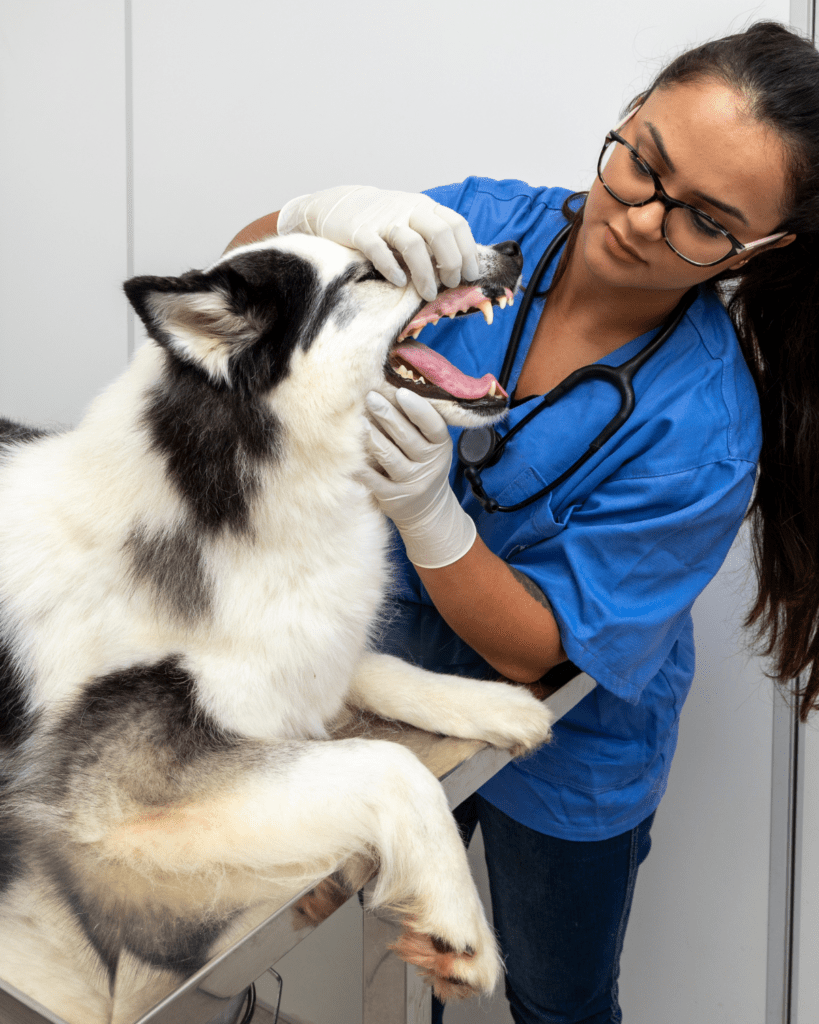
Why Is Cooperative Care Important With Dogs?
Cooperative care with dogs is important because it allows dogs to have a choice and control over their care procedures, reducing the stress, anxiety, and fear that often accompanies this type of care. It turns our dogs into willing participants as opposed to struggling patient.
It also helps to save them some stress when quick examinations need to be performed. Teaching cooperative care behaviors to dogs can help them become active and willing participants in their care, and it is important to work with only those dog-industry professionals who will follow your wishes concerning your dog’s care and handling in all interactions. One of the most important aspects of teaching cooperative care is that the animal is allowed to “say no.” They can indicate using a non-aggressive, safe behavior that they want the procedure to stop.
This in turn, prevents the bite.
But cooperative care goes beyond just veterinary care and nail trims…
10 Times To Practice Cooperative Care With Your Dog
1 – Gentle grooming
Grooming your dog can be a great way to bond with them and keep them healthy. But, some dogs may not enjoy the experience and may become anxious or stressed. To make grooming a more positive experience for your dog, try using cooperative care techniques. Start by slowly introducing grooming tools to your dog, like a brush or comb, and give them praise and treats for staying calm. Gradually increase the length of grooming sessions and reward your dog for their cooperation. And remember, you do not need to get your dog totally groomed! Even a little is better than none.
For us, what we find to work is to go outside, pick a designated spot (you could use a yoga mat, or a bath mat to denote this space), ask puppy to go there, and you begin brushing, start at a number, e.g. 3, and count out loud “3” brush stroke, “2” brush stroke “1” brush stroke, then praise and reward! For Indie and I this looks like a ball throw. Do still look for signs of nervousness, but the more you practice, you can move up to 4 before you praise and reward, then 5… the whole thing then becomes a super predictable process that your dog begins to understand, and before you know it, you’ve conquered basic grooming.
Focus on the main problem areas to desensitise, and when you get these main areas to be successful, then the process of grooming becomes quite simple — and that’s whether you elect to do this yourself, or get a professional to help!
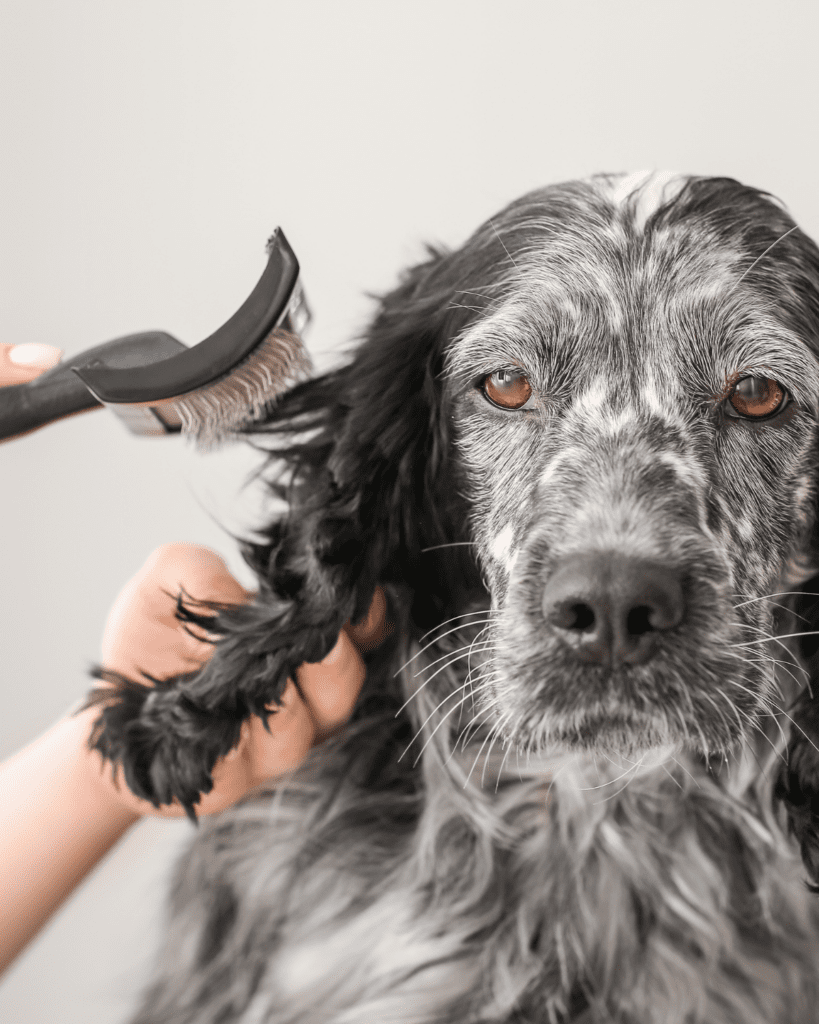
2 – Teeth brushing
Brushing your dog’s teeth is an important part of their oral health, but many dogs don’t enjoy the experience. To make teeth brushing a cooperative care activity, start by introducing your dog to the toothbrush and toothpaste slowly. Allow them to sniff and taste the toothpaste to get used to it. Then, start by brushing just a few teeth at a time, or for just a few seconds and reward your dog for their cooperation. Gradually increase the number of teeth you brush and the length of the brushing session, ensuring that this becomes a routine part of your dog’s behavior.
3 – Nail trimming
Trimming your dog’s nails is important to prevent discomfort and injury, but many dogs are afraid of having their paws handled and it only usually takes the first time that you make a mistake and nip a quick for a dog to become sensitive to the process.
To make nail trimming a cooperative care activity, start by handling your dog’s paws and giving them praise and treats for staying calm. Then, introduce the nail clippers slowly and let your dog sniff and investigate them.
Gradually increase the length of time you handle your dog’s paws and reward them for their cooperation, reward them well for every claw you clip, and again, remember that you don’t need to trim every claw! But you can find out more about this in this article: Dog And Puppy Claws: How To Easily Maintain Claws At Home In 6 Simple Steps
Also, you can train a scratch board instead if you so choose.
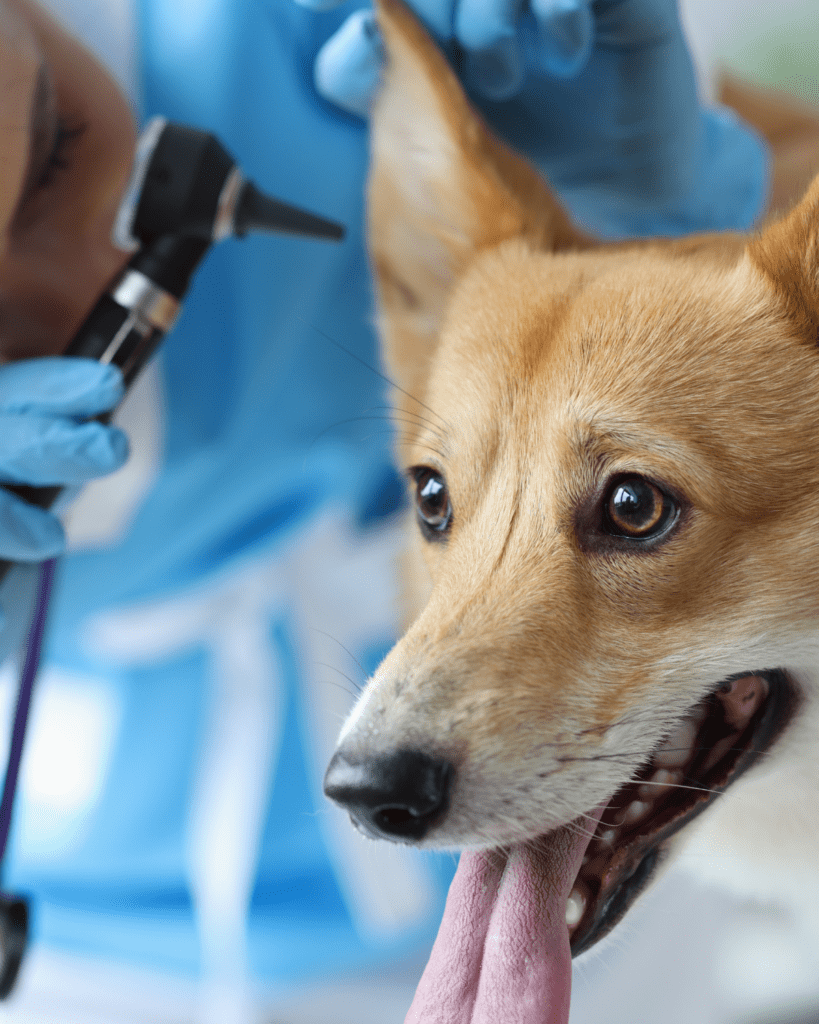
4 – Veterinary visits
This is the big one.
Many dogs become anxious or fearful when visiting the veterinarian. Vet care isn’t typically a thing your dog comes to enjoy, right? Because normally your vet isn’t a regular part of your life, and is moreso needed in a painful emergency. So your veterinary team becomes associated with fear! To make veterinary visits a more positive experience, try using cooperative care techniques. Start by introducing your dog to the veterinarian’s office slowly and letting them explore the environment and ensure that they find the environment to be a really rewarding place to be. Reward your dog for staying calm and relaxed.
Outside of the vets office, start moving through the necessary physical procedure, e.g. touching their leg and put it on cue, handling their paw, lifting their tail, watch for stress signals, and reward for their confidence and reassure them throughout. Initially, keep training in short sessions as conditioning sessions can feel quite intense to start, and a shorter, more successful session is far more important than achieving the goal quickly.
During the exam, continue to use positive reinforcement techniques, explain to your vet that you’re doing cooperative care and that the necessary physical procedures will go better if you cue the places your vet wants to explore! This adds predictability for your dog and is one of the best gifts you can give your vet.
By using cooperative care techniques, you can help your dog feel more comfortable and relaxed during veterinary visits – remember that during medical care we really do also need to advocate for our dog and read their body language as best we can.
5 – Handling and restraint
Dogs may become fearful or anxious when being handled or restrained, sometimes that can be a simple as a harness, a collar, or a leash. To make handling and restraint a more positive experience, start by introducing your dog to gentle handling and restraint techniques gradually. Use positive reinforcement methods and teaching a cue such as a chin rest, to reward your dog for staying calm and relaxed. Gradually increase the length of the position, while continuing to reward your dog for their cooperation.
6 – Medication administration:
Giving medication to your dog can be a challenge, especially if they don’t like the taste or texture of the medication. To make medication administration a cooperative care activity, start by introducing your dog to the medication gradually. Let them sniff and taste the medication, and reward them for staying calm and relaxed.
Then, try hiding the medication in a treat or food item that your dog enjoys. Gradually increase the amount of medication you give to your dog, while continuing to reward them for their cooperation. With time and practice, medication administration can become a positive and stress-free experience for both you and your dog.
Other things you may train for during a veterinary examination or home medication:
- Ear drops
- Eye drops
- Blood draw
- Liquid oral medication
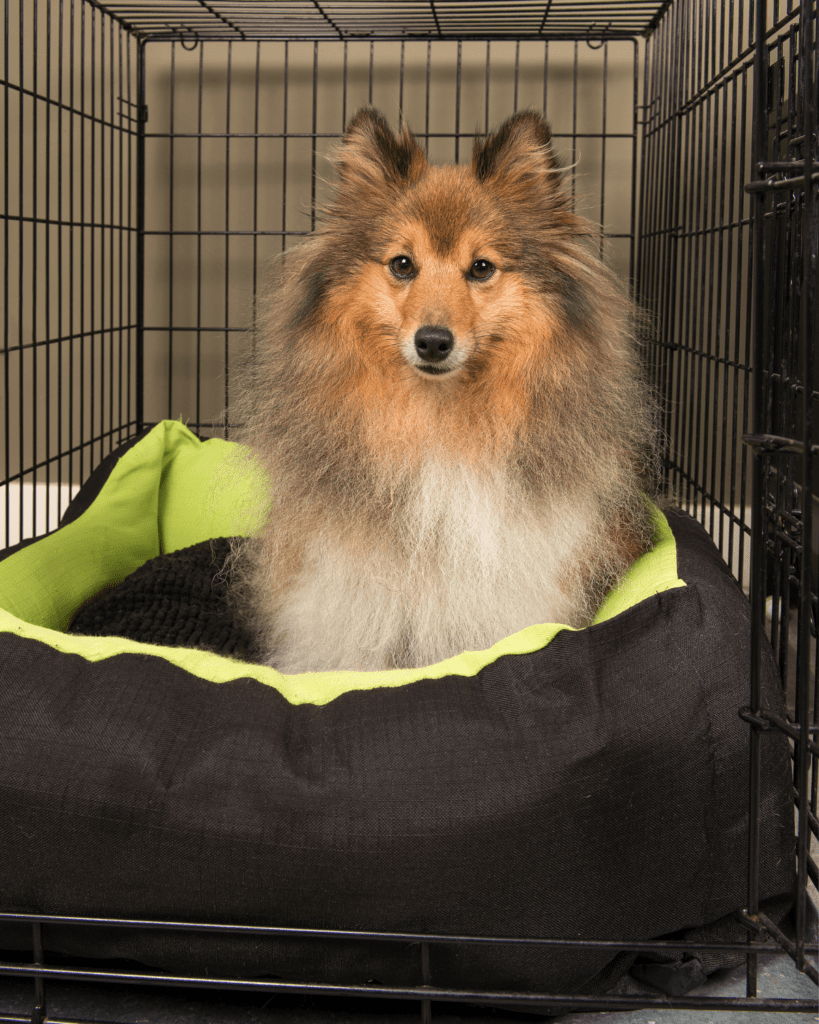
7 – Leash training
This is possibly the biggest part of cooperative care that gets omitted in everyday life.
Leash training is an important part of your dog’s overall training and safety. To make leash training a cooperative care activity, start by introducing your dog to the leash and collar slowly. Let them sniff and investigate the equipment, and reward them for staying calm and relaxed. Reward them for being in the right position, and if they begin to pull?
Don’t resort to a prong collar, just stop where you are, and let them come back to you. Ad that stage, you mark and reward!
As your dog becomes more comfortable with the process of walking loose leash, gradually increase the length and duration of the training sessions, while continuing to reward them for their cooperation! But if you need more helpful tips on loose leash walking head here: How To Stop Your Dog Pulling On A Leash – The Ultimate Tried and Tested 7 Step Solution
8 – Crate Training
Crate training helps when it comes to cooperative care, because having a space they’ll be comfortable within, this then means that you can direct your dog around your home, it means they can take space when they want it, and that they can dictate when they need space. Also means that if they are in a veterinary clinic, or within a groomers and have to wait, that they won’t be stressing out before the surgery or appointment.
If you want to learn more about cooperative crate training, try this The Rebarkable Crate Training Information Center!
9 – Muzzle Training
Training your dog to be comfortable in a muzzle before it’s an emergency is a really important thing and definitely one of the cooperative care exercises I would advise for all dogs. It’s missed from most basic skills, but the reason I say it’s a must? Is because even a cooperatively trained dog in such situations as a broken leg, or severe pain becomes a risk. And a dog who has gone through the training process to accept a muzzle means that, again, you avoid a bite and everyone feels as comfortable as possible and you’re keeping your veterinary professionals safe.
If you’re looking for a muzzle, this may help; Best Dog Muzzles
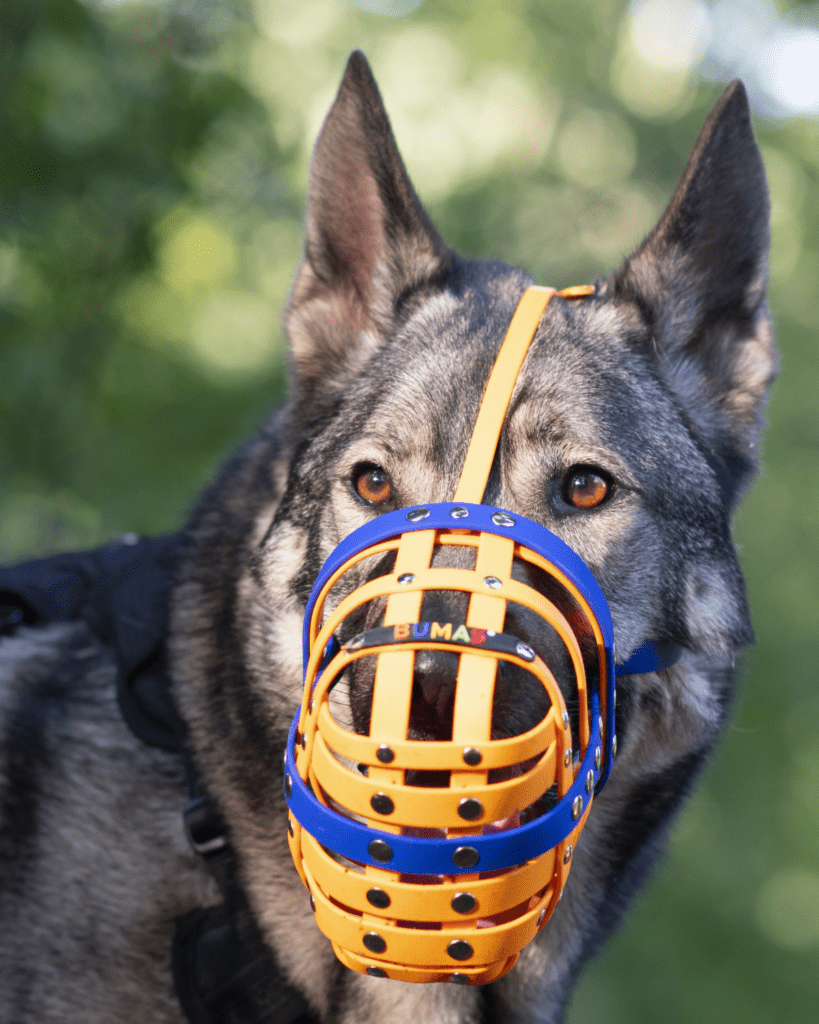
10 – Environmental enrichment
Environmental enrichment is an essential part of your dog’s overall well-being, as it helps prevent boredom and destructive behavior. To make environmental enrichment a cooperative care activity, start by introducing your dog to new toys and activities gradually. Use positive reinforcement methods, such as praise and treats, to reward your dog for engaging with the new toys and activities. Gradually increase the complexity and duration of the enrichment activities, while continuing to reward your dog for their cooperation. By making environmental enrichment a cooperative care activity, you can help your dog stay mentally and physically healthy, while also building a stronger bond with them.
Cooperative care is the way forward
In conclusion, cooperative care for dogs is a low-stress approach to caring for your pet that focuses on building a relationship based on trust, respect, and mutual benefit. By teaching your dog cooperative care behaviors, you can help them become active and willing participants in their own care, reducing stress and anxiety during veterinary visits, grooming, and handling. Remember, cooperative care doesn’t mean you have to do everything for your dog all the time, but by working together with your pet, you can create a happier, healthier, and more harmonious relationship that benefits you both. So, start implementing cooperative care practices today and watch your bond with your furry friend grow stronger and stronger!
Happy training! There’s a lot to do, and the more you start looking? The more you see opportunities to work together.

Author, Ali Smith
Ali Smith is a professional, qualified, and multi-award winning trainer is the founder of rebarkable. She has always believed animals deserve kindness and champions force free methods. Believing that dog guardians will all choose the kindest options if proper information is provided, she aims to help all dog guardians who need it and make dog training as accessible as possible
Ali lives win Maryland, US with her husband and her three dogs.

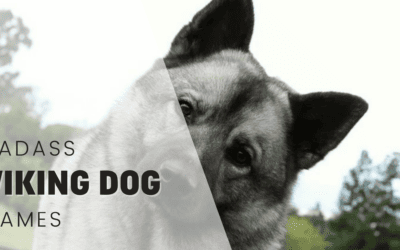




0 Comments